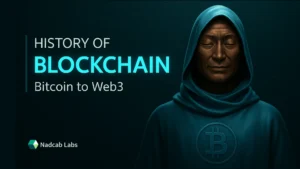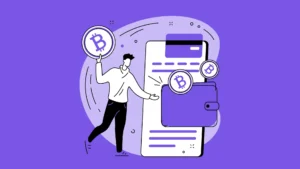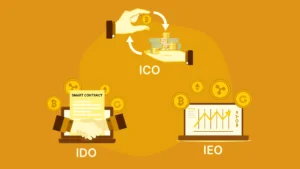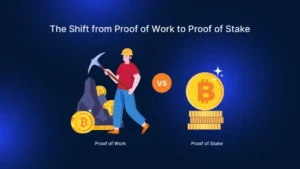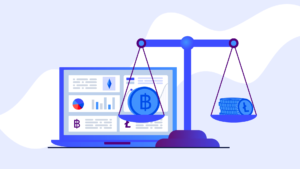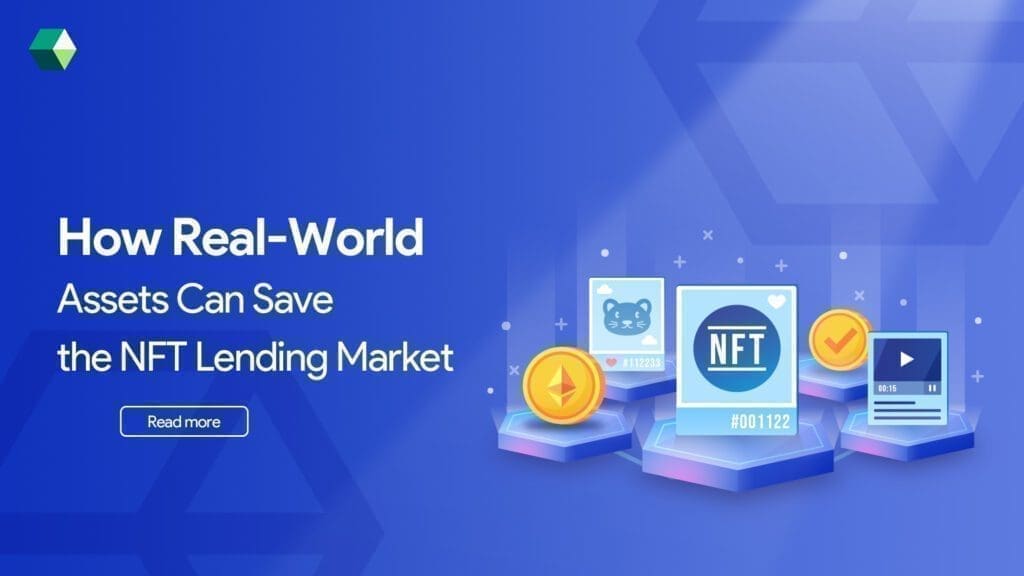
The NFT lending market has had a rollercoaster ride over the past few years. What began as an innovative way to bring liquidity to the booming NFT space quickly ran into problems—volatile valuations, low liquidity, and high default rates. These issues exposed the fragility of relying on speculative digital collectibles as collateral. But what if NFTs could be backed by something more stable, tangible, and trusted? The NFT lending market has had a rollercoaster ride over the past few years. What began as an innovative way to bring liquidity to the booming NFT space quickly ran into problems—volatile valuations, low liquidity, and high default rates. These issues exposed the fragility of relying on speculative digital collectibles as collateral. But what if NFTs could be backed by something more stable, tangible, and trusted?
By integrating tokenized real-world assets into NFT lending platforms, developers and investors have the opportunity to transform a shaky ecosystem into a sustainable financial infrastructure. We’ll explore how RWAs can redefine the future of NFT lending, bridging the gap between traditional finance and decentralized technology.
What are Real-World Assets (RWAs) in the Context of Blockchain?
Real-World Assets, commonly referred to as RWAs, are physical or tangible assets that exist outside of the blockchain but are represented digitally through tokenization. These can include real estate, commodities like gold, government bonds, invoices, or even cars. Tokenizing RWAs allows them to be traded or used in blockchain ecosystems, including decentralized finance (DeFi).
By anchoring digital tokens to real-world value, RWAs bring much-needed stability and trust to volatile crypto markets. In the context of NFT lending, they offer a more reliable form of collateral compared to traditional, highly speculative NFTs.
The Rise and Fall of NFT Lending Platforms
NFT lending platforms initially gained momentum by allowing users to borrow funds against the value of their NFTs. This concept brought utility to NFT holdings and unlocked liquidity in what was previously a static market. Platforms like NFTfi, BendDAO, and Arcade made it possible to use popular NFTs as collateral for loans. However, these platforms began to face significant challenges:
-
Volatility
The value of most NFTs is heavily influenced by market hype, social media trends, and investor sentiment rather than underlying fundamentals. This makes them highly volatile and unpredictable, which poses a serious problem when used as loan collateral. Sudden drops in value can occur with little warning, increasing the risk for lenders and making loan agreements unstable.
-
Low Liquidity
Many NFTs, especially those tied to niche communities or lesser-known artists, suffer from low liquidity. There often aren’t enough active buyers in the market, which makes it challenging to sell these assets quickly during loan liquidations. This lack of liquidity hampers the recovery of funds and creates additional risk for lending platforms.
-
Default Risk
Because NFT prices can fluctuate so drastically, many borrowers have defaulted on their loans when the value of their NFT collateral dropped below the loan amount. Without stable, predictable asset backing, lenders face significant losses, and the overall reliability of NFT lending platforms is compromised.
These issues led to a decrease in trust and user adoption, signaling the need for a more sustainable model.
Why Traditional NFTs Fall Short in DeFi Lending
Most NFTs—particularly those in the art and collectibles space—lack intrinsic value, with their worth largely driven by speculation, market trends, and popularity. This speculative nature makes them highly unreliable as collateral in decentralized finance (DeFi) lending. Their value is subject to extreme price volatility, often crashing overnight due to shifts in sentiment or market news. Additionally, there is no standardized method to accurately appraise an NFT’s value, which creates uncertainty for lenders. Liquidity is another major issue, as many NFTs can remain unsold for extended periods. Moreover, their practical utility is often limited, with many serving no function beyond visual appeal or use in niche gaming platforms. These factors combine to create a high-risk environment for lenders, ultimately making NFT lending with traditional digital collectibles an unstable and risky proposition.
How Tokenized Real-World Assets Offer a Solution
Tokenized Real-World Assets (RWAs) present a transformative solution to many of the challenges facing traditional NFT lending. By converting physical assets, such as real estate, bonds, or commodities, into blockchain-based tokens like NFTs or ERC-20 tokens, these digital representations inherit the stability and intrinsic value of the underlying assets. This results in several key benefits: tokenized RWAs have a stable, tangible market value, offering more consistent collateral for loans; they can be fractionalized and easily traded, improving liquidity; and their predictable pricing significantly lowers the risk of borrower defaults. Ultimately, this approach blends the innovation of blockchain technology with the trust and reliability of traditional finance, creating a more secure and scalable foundation for NFT lending.
Use Cases- RWAs Already Transforming NFT Lending
Some platforms are already leading the way by incorporating RWAs into their lending ecosystems:
-
Centrifuge
Centrifuge is a DeFi protocol that brings real-world assets like invoices, real estate, and supply chain financing into blockchain-based lending pools. By tokenizing these assets, it allows businesses to access liquidity without relying on traditional banks, while providing DeFi investors with yield opportunities backed by tangible value.
-
Maple Finance
Maple Finance focuses on institutional lending by leveraging tokenized debt instruments. It enables verified borrowers, such as crypto-native businesses and fintech firms, to access unsecured loans through transparent, on-chain processes. This helps bridge the gap between traditional finance and decentralized lending markets.
-
RealT
RealT is a platform that tokenizes real estate properties, allowing users to purchase fractional ownership in the form of blockchain-based tokens. These tokens generate rental income distributed directly to holders, offering a simple and accessible way to invest in property while earning passive income on-chain.
These examples prove that NFT lending can work more effectively when backed by real assets instead of speculative art pieces.
Benefits of Integrating RWAs in NFT Lending
Bringing RWAs into NFT lending platforms offers multiple advantages:
-
Risk Mitigation
RWAs provide stable, predictable collateral since they’re tied to tangible assets with real market value. This reduces volatility and lowers the risk of defaults, making NFT lending more secure.
-
Increased Adoption
Backing NFTs with real assets attracts more users, especially institutions and cautious investors, by offering greater trust and transparency in the lending process.
-
Regulatory Alignment
Tokenized RWAs help DeFi platforms align with financial regulations, making it easier to operate legally and attract institutional partners.
-
Fractional Ownership
RWAs allow high-value assets to be split into affordable shares, enabling broader access for small investors and improving overall market liquidity.
-
Enhanced Utility
NFTs backed by RWAs gain real-world financial use, moving beyond art to serve in lending, insurance, and investment, expanding their practical value.
The Role of Institutions and Regulators
Institutional involvement plays a vital role in driving the widespread adoption of RWA-backed NFT lending. For these systems to gain mainstream acceptance, banks, insurance companies, and government regulators must collaborate to establish robust frameworks that support the secure tokenization of physical assets. Regulators can contribute by providing legal recognition for tokenized RWAs, ensuring consumer protection, and setting standardized guidelines for asset valuation and reporting. Meanwhile, financial institutions can enhance the ecosystem by offering custody and insurance services, integrating RWA tokens into traditional lending models, and lending credibility and trust to the space through their participation.
The Future of NFT Lending: RWA-Driven Ecosystems
The future of NFT lending lies in the development of ecosystems where digital and physical assets coexist seamlessly. These next-generation platforms will enable secure, regulated, and transparent lending processes, making NFT collateral more appealing by tying it to tangible, real-world value. By doing so, they open the door for innovation across various industries—from real estate and finance to supply chain management. Blockchain developers and NFT lending platform development companies are actively exploring these hybrid solutions, aiming to bridge the gap between decentralized finance (DeFi) and traditional asset classes to build more robust and reliable financial systems.
Ready to Explore the Future of NFT Lending with Real-World Assets?
As the NFT market matures, the integration of real-world assets into lending platforms isn’t just a trend—it’s a necessity. If you’re looking to build a stable, secure, and innovative NFT lending platform, it’s time to look beyond speculative assets.
Partner with experts in NFT lending platform development services to bring the next generation of DeFi solutions to life. By combining the best of both worlds—real-world assets and blockchain technology—you can create platforms that are not only profitable but also sustainable. Get in touch with us today to learn how our NFT lending platform development expertise can help you build the future of decentralized finance.

